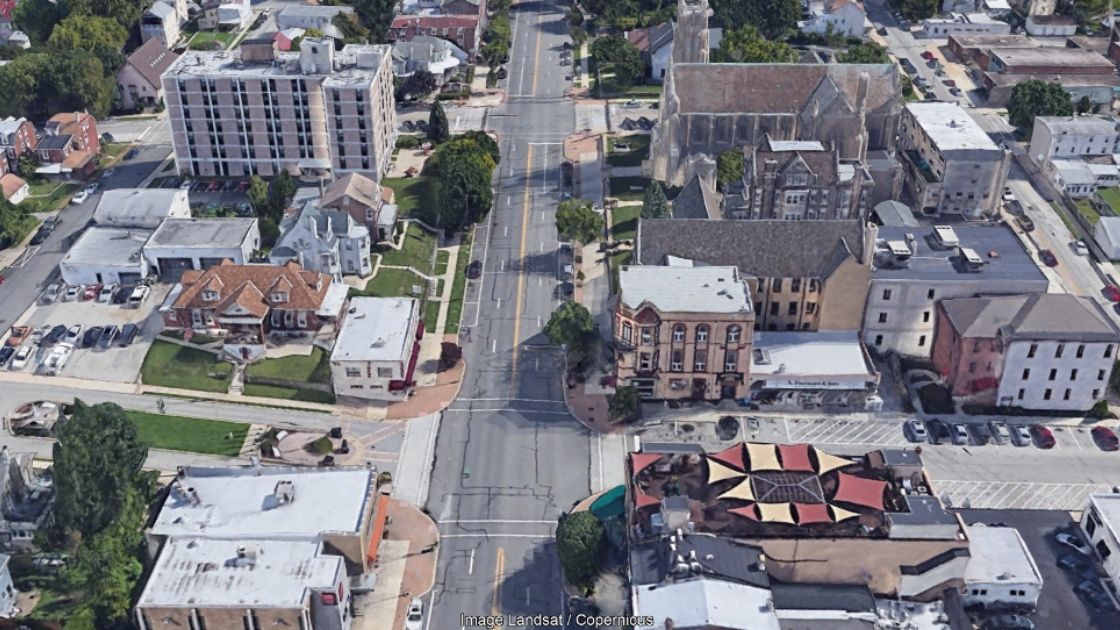During the November 3rd meeting of Conshohocken’s Borough Council, there will be a presentation from the borough’s traffic engineer, Brian Keaveney, on a study conducted about a road diet along at least a portion of Fayette Street. The study was authorized by the borough council in August 2021.
A presentation in April 2021 offered an initial concept for Fayette Street, which would reduce at least a portion of Fayette Street from four lanes to two lanes (with a turning lane).
If you are not familiar with a road diet, below is an explanation from the Federal Highway Administration:
A roadway reconfiguration known as a Road Diet offers several high-value improvements at a low cost when applied to traditional four-lane undivided highways. In addition to low cost, the primary benefits of a Road Diet include enhanced safety, mobility and access for all road users and a “complete streets” environment to accommodate a variety of transportation modes.
A classic Road Diet typically involves converting an existing four-lane, undivided roadway segment to a three-lane segment consisting of two through lanes and a center, two-way left-turn lane.
The resulting benefits include a crash reduction of 19 to 47 percent, reduced vehicle speed differential, improved mobility and access by all road users, and integration of the roadway into surrounding uses that results in an enhanced quality of life. A key feature of a Road Diet is that it allows reclaimed space to be allocated for other uses, such as turn lanes, bus lanes, pedestrian refuge islands, bike lanes, sidewalks, bus shelters, parking or landscaping.

